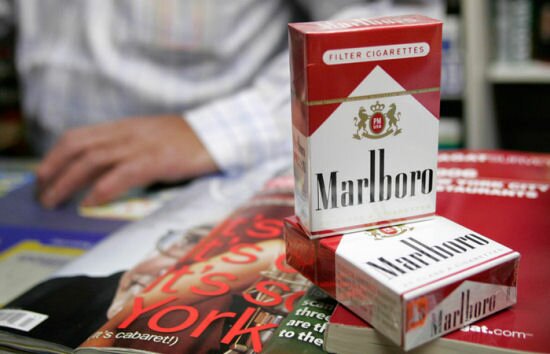Today is World No Tobacco Day. We asked students at St. James Middle School in Johnson City to write their thoughts about tobacco and the influence on kids of celebrities and athletes using tobacco.
» Michaela: “Many people are influenced by media pressure. Many kids give in to that pressure. They see someone they think is cool smoking Marshal and think, ‘I want to be like them.’ So they grab a cigarette and start that life-killing habit. The more famous people (smoking), the more likely kids are to smoke.”
» Hunter: “Media almost endorses smoking. Actors, athletes and musicians smoke, and kids can see that and want to be like their idol. Once you start, smoking is hard to stop and you can die.”
» Brendan: “Smoking doesn’t just affect the smokers; it affects everyone around them.”
» Ben: “When baseball players chew tobacco, young kids want to do it because they look up to them.”
» Nathan: “I think chew in the MLB should be prohibited. I strongly think that if a kid wants to play pro baseball, he will want to be like those already playing and will want to chew.”
» Clayton: “When they show those people chewing tobacco, it does somewhat influence me to chew tobacco. If you begin to chew, it can turn into a habit.”
» Andrea: “The media shouldn’t show people using tobacco because it can influence others. If kids see their heroes smoking, they might think it is OK.”
» Meghan: “Just because stars do it doesn’t mean it’s right. It causes lifelong diseases and death. My grandpa died before I met him from this.”
» Hunter: “Put warnings before movies that show tobacco or drugs.”
» Brenna: “Tobacco should be banned from TV shows and movies that kids watch. Smoking has a very bad influence on the kids of the world.”
» Rachel: “When kids hear singers like Lady Gaga singing about tobacco, they are affected. They will do what they think is cool.”
» Erin: “Many kids saw Charlie Sheen smoking and using drugs. It’s a bad influence.”
» Olivia: “Also, seeing advertisements influences kids. Tobacco companies promote their products at kids’ eye level.”
» Olenka: “Teens are more influenced than anyone else.”
» Natalie: “Look at that famous actress. She’s beautiful, everyone likes her and she’s smoking. Many people look up to her, strive to be like her. Teens should be aware that to be like a celebrity, they don’t have to smoke.”
» Sawyer: “Stars and role models will ‘light up,’ kids look up to them and have a 16 percent more chance of smoking. Every time you [smoke], you lose a minute of your life. Smoking costs a lot. I think we’d all rather go to Disney than smoke.”
» Liam: “If you see your role model smoking a cigarette, don’t follow them!”
